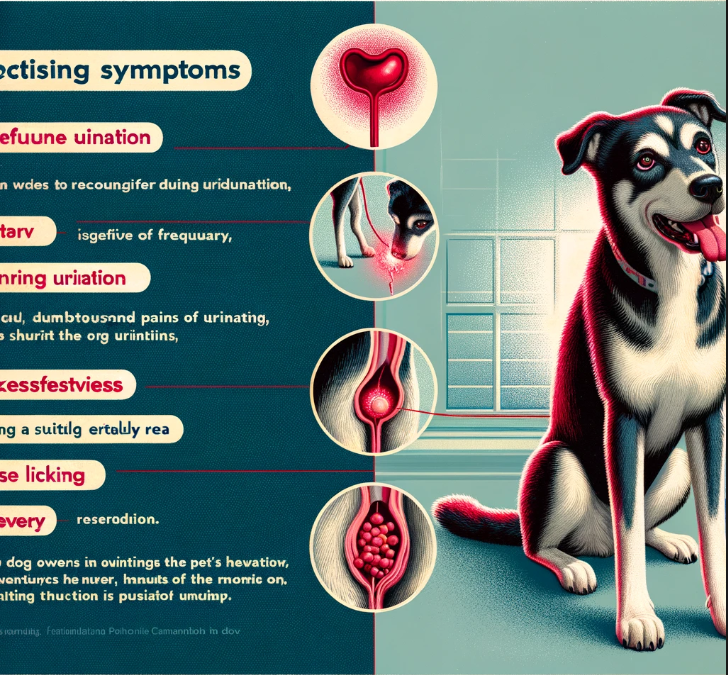How to tell if your dog has a UTI?
How to tell if your dog has a UTI?
Are you tired of your furry friend’s incessant barking? Do you want to put an end to it without causing harm to your beloved cat? If so, you might be considering purchasing an ultrasonic dog barking device. However, before making a decision, it’s essential to understand the impact such devices can have on your feline companion.
.jpeg)
As devoted pet owners, ensuring the well-being of our furry friends is paramount. Recognizing signs of common health issues, such as urinary tract infections (UTIs), is crucial for early intervention and optimal pet care. In this comprehensive guide, we'll explore the key indicators that may suggest your dog has a UTI and discuss the steps to take if you suspect a urinary issue.
1. Increased Frequency of Urination:
One of the primary signals of a potential UTI in dogs is a noticeable increase in urination frequency. If your dog is requesting more frequent bathroom breaks or displaying accidents indoors, it may be an early sign of a urinary problem.
2. Straining or Difficulty Urinating:
Watch for signs of discomfort during urination. If your dog seems to be straining, whining, or exhibits hesitation when attempting to urinate, it could indicate a urinary tract issue requiring attention.
3. Blood in the Urine:
Observing blood or discoloration in your dog's urine is a clear indication of a problem. If you notice a reddish tint, it's a signal that there may be inflammation or infection within the urinary tract.
4. Strong Odor:
Changes in the odor of your dog's urine can be a telltale sign of a UTI. An unusually strong or foul smell may suggest the presence of harmful bacteria, prompting a closer look at your dog's urinary health.
dog exhibiting symptoms of a urinary tract infection (UTI), without showing any blood. It depicts signs like frequent urination, discomfort or pain during urination, and excessive licking of the genital area, set in a home environment. This visual aims to educate dog owners on recognizing UTI symptoms in their pets.
5. Excessive Licking of Genital Area:
Dogs may lick themselves for various reasons, but if you notice an increase in licking of the genital area, it could be a sign of discomfort or irritation ***ociated with a UTI.
6. Changes in Behavior:
Behavioral changes can also be indicative of a UTI. If your typically lively dog becomes lethargic, irritable, or exhibits noticeable changes in temperament, it's wise to investigate potential urinary issues.
What to Do If You Suspect a UTI:
If you observe any of these signs, it's crucial to take prompt action. Consult with your veterinarian for a comprehensive examination, including a urinalysis, to confirm the presence of a UTI. Depending on the severity, additional tests may be recommended.
Treatment and Care:
If a UTI is confirmed, your veterinarian will likely prescribe a course of antibiotics. Adhering to the prescribed treatment plan is essential for a successful recovery. Regular follow-up appointments may be necessary to monitor progress and ensure the infection has cleared.
Preventing UTIs:
While not all UTIs are preventable, there are steps you can take to reduce the risk:
Ensure your dog has access to clean, fresh water at all times.
Schedule regular bathroom breaks to encourage regular urination.
Maintain good hygiene by cleaning your dog's genital area.
Provide a balanced diet tailored to your dog's age, breed, and health. https://39459foluqt59p3oennd3rlqfu.hop.clickbank.net?cbpage=tsl&tid=YOUR_TID
Conclusion:
As responsible pet owners, staying vigilant to changes in your dog's behavior and habits is crucial for their overall health. By recognizing the signs of a potential UTI and seeking timely veterinary care, you can ensure your furry companion receives the attention and treatment needed for a healthy and happy life.
This post includes affiliate links through which we earn a little commission if you end up buying the product. This forum is maintained with commissions. Thank you for your help.












Leave a comment